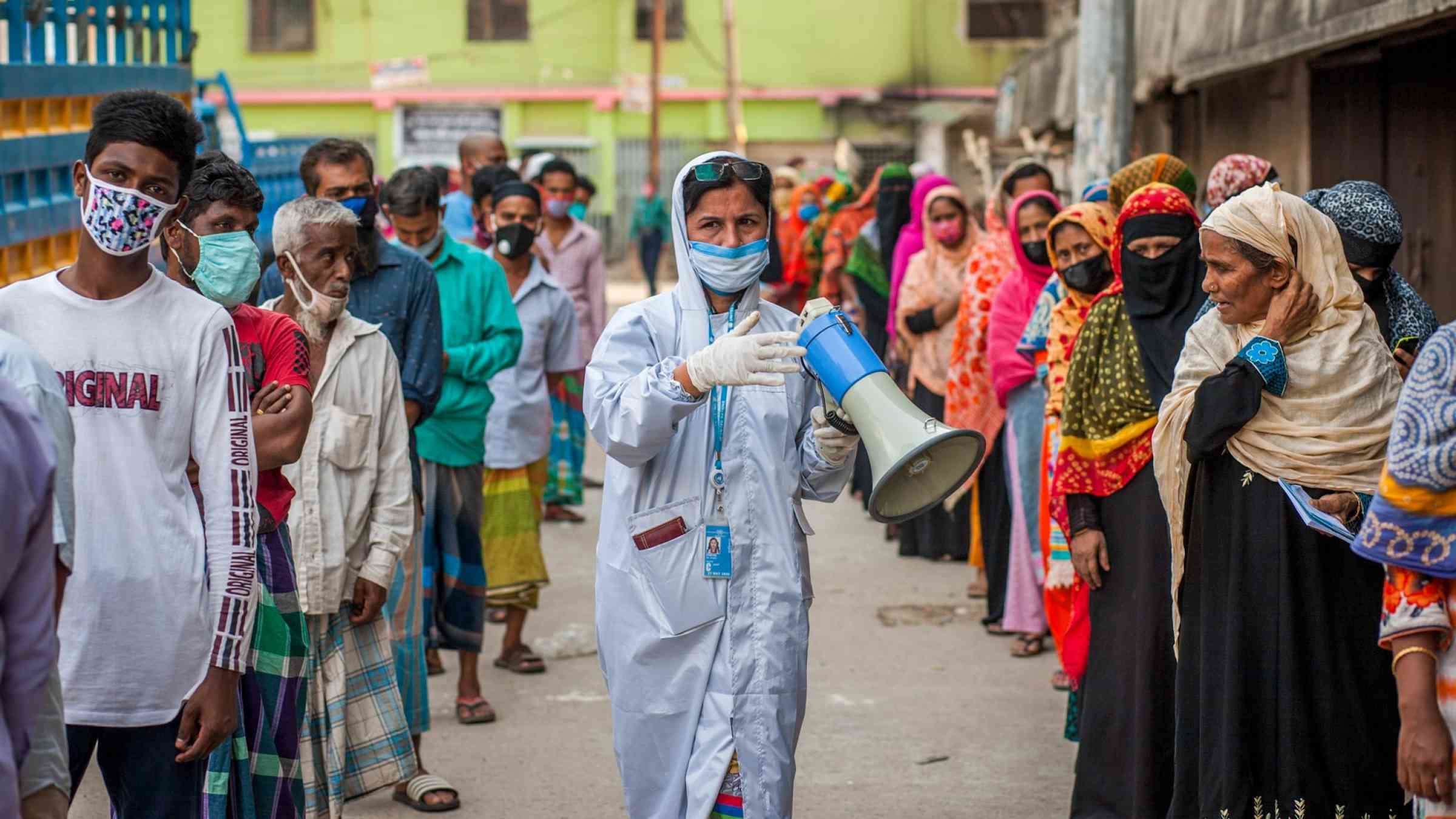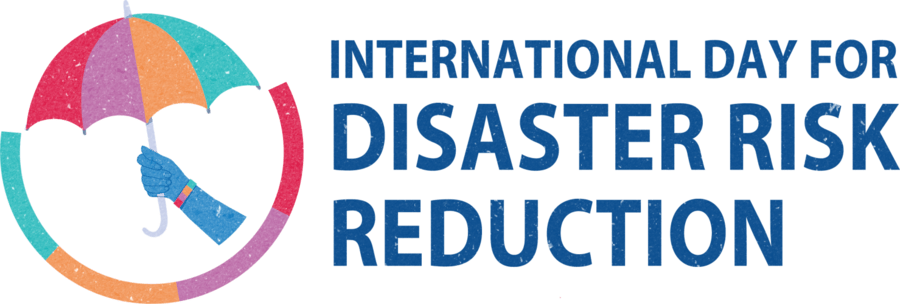What if early warning is the path to preparedness for the next pandemic?

This What If…? is the second publication of an exploratory series released throughout the week of this years’ International Day for Disaster Risk Reduction which takes place on October 13 2022 under the theme of “early warning and early action for all”. Building upon the work of the Regional Bureau for Asia Pacific Horizon Scanning initiative, the series uses foresight to invite consideration of the risks and uncertainties that will impact countries’ abilities to be better prepared for more complex crises and disasters in the region.
COVID-19 has demonstrated how vulnerable to, and ill-prepared the world is for a global pandemic. Disease outbreaks are likely to become more frequent amidst a rapidly warming planet and human invasion on untapped forest territories, which increases exposure to wildlife, and therefore disease transmission between humans and animals. Luck, therefore, is not enough to avoid the next communicable disease outbreak – instead, the possibility needs to be treated with mathematical certainty. Accordingly, pandemic preparedness is identified as a global health priority issue over the next 5 years.
Early warning systems can help to prepare communities, governments, and public health officials for faster resource mobilization and more cost-effective response in order to contain the spread of viruses in time. With this in mind, today’s blog story presents a scenario in which early warning systems become the path to preparedness for the next pandemic.
Evolving risk landscapes
Aarathi Krishnan – Senior Advisor on Strategic Foresight, UNDP Asia Pacific
Signals identified through the RBAP Horizon Scanning Initiative underline the urgent need for pandemic preparedness across Asia-Pacific to adapt to these uncertain futures. For instance, signals showed that 70% of those at risk of dengue fever live in the region already, while a rise in cases is further expected. Rapid unplanned urbanization resulting in high urban density, inefficient waste management and rising temperatures together create ideal circumstances for climate-sensitive infectious diseases.
Mistrust in health care systems, disrupted global supply chains, and a call to prepare for future pandemics are also emerging trends in the region. In the meantime, a current projection shows a 47-57 percent probability for another pandemic as deadly – or even more so – as COVID-19 over the next 25 years, which the region simply cannot afford. The health sectors are still recovering from COVID-19, and amidst fighting against other illnesses, the consequences of an undetected disease in the future will push under-resourced health care systems to the brink of collapse. One such example is in Bangladesh, where a spike in dengue cases was observed in 2021, while simultaneously COVID-19 was wreaking havoc in the country. In Pacific nations, a long-term strategy to build resilience against future pandemics is also essential to avoid health development gains in reducing the threat of HIV, hepatitis, TB and malaria.
Path to preparedness?
In response to these emerging trends, early warning systems can offer a path to pandemic preparedness by mitigating the risk of overburdening health care facilities. In Vietnam, since 2019, a dengue forecasting Model Satellite-based system (D-MOSS) has been piloted which relies on seasonal climate forecasts, Earth Observation, and a hydrological model to predict outbreaks up to six months in advance. Having successfully shifted the disease response from reactive to proactive in Vietnam, D-MOSS is now rolled out in countries facing similar dengue fever and water management challenges, including Sri Lanka, Laos, Cambodia, Thailand, The Philippines and Malaysia.
Another example is WHO’s Early Warning, Alert and Response System (EWARS), which detects diseases that could become additional cascading risks in emergency settings. For instance, EWARS successfully reported and managed influenza-like illness, diarrheal disease and dengue cases in Fiji as infectious diseases became secondary impacts following Cyclone Winston in 2016.
Although surveillance systems are in place for certain maladies, it is still understudied how successful they could be in detecting zoonotic illnesses like COVID-19. Even if climate and other environmental factors are well understood, many uncertainties are still associated with emerging pathogens in terms of transmission variables and human mobility, factors influenced by climate change and changing patterns of trade and travel.
Uncertainty is difficult to navigate for government stakeholders. Failure to act can feed into mistrust in institutions that will, again, undermine a coordinated global response and fuel hatred against countries of new disease origins. Strict measures on the other hand can cascade into mental health challenges and disrupt socioeconomic activities, all at significant costs. Restrictions since 2020 exposed huge social inequalities because for many, following public health recommendations comes at the expense of losing the ability to provide for the family. Therefore, reducing inequality must also become embedded in pandemic preparedness.
Another alarming trend in Asia-Pacific is the emerging synergy between (a rise in) non-communicable diseases with (re-)emerging infectious diseases. The connection was clearly demonstrated over the past two years, as individuals with chronic illnesses are more susceptible to severe symptoms of the COVID-19 pandemic. Hopefully, this realization will drive public health strategies towards a more integrated health care system which will be able to avoid significant economic costs with higher capacities to bear the double burden of existing endemics and new diseases in the future.
To look forward at pandemic preparedness we must also look back at what we have in place already. If early warning systems already exist to contain large-scale outbreaks of certain diseases, can the lessons learned be scaled up and applied to pandemics across the board? To strive for a paradigm shift in disease detection and management, there is an imminent need to invest in accessible health care monitoring systems through data, inclusive technology and above all, basic capacities and transparency about the can do's and dont's.
Sára Csapó is a Preparedness and Early Warning Intern in the Disaster Risk Reduction and Recovery for Building Resilience Team at UNDP Geneva. She graduated this year from Lund University with an MSc Degree in Disaster Risk Management and Climate Change Adaptation. She worked at a non-governmental organization in Cambodia on projects that provide access to education for children with difficult social backgrounds. As part of her MSc degree, she finished a semester at the IFRC Regional Office for Europe and Central Asia, supporting projects related to disaster response and recovery.
Giordano Margaglio is a Disaster Preparedness Programme Analyst in the Disaster Risk Reduction and Recovery for Building Resilience Team at UNDP Geneva. Giordano has private and public sector experience in projects related to crisis management and climate change adaptation in Turkey, and holds an MSc in Disaster Risk Management and Climate Change Adaptation at Lund University.
Editors' recommendations
- View more on the International Day for Disaster Risk Reduction 2022
- What if technological innovation is the future of early warning systems?
- What if early warning systems are held back by the affordability of early action?
- What if early warning systems are used to trigger social protection measures in times of crisis?
